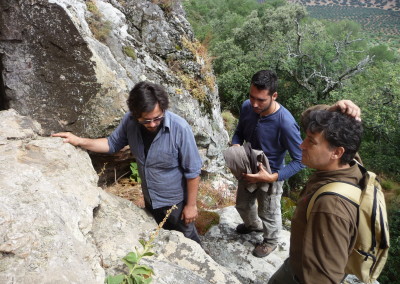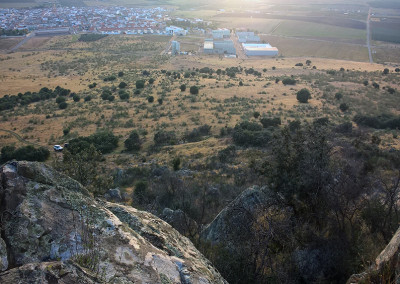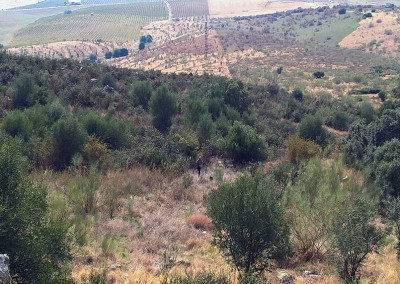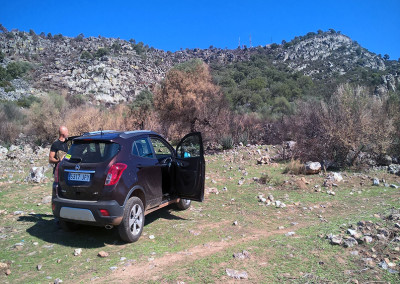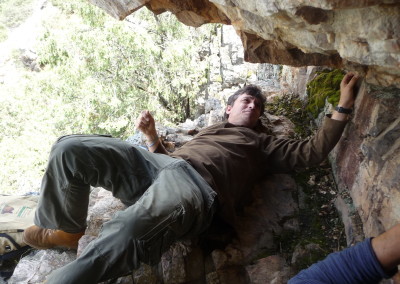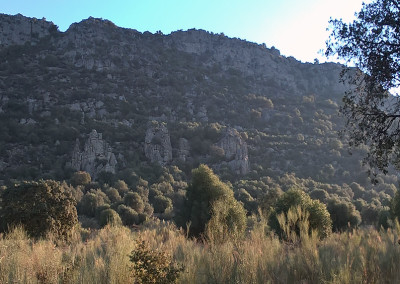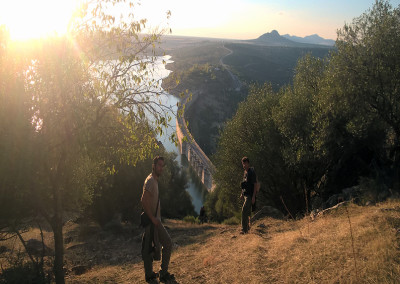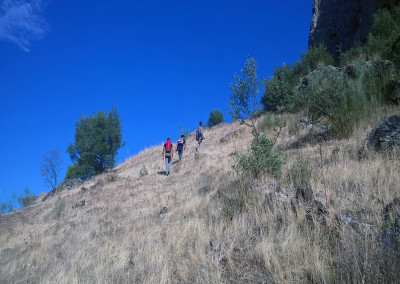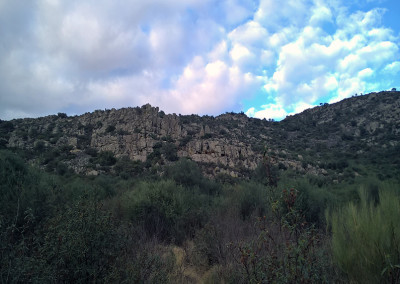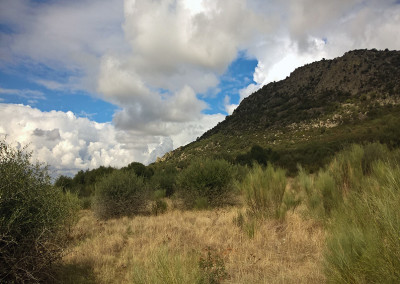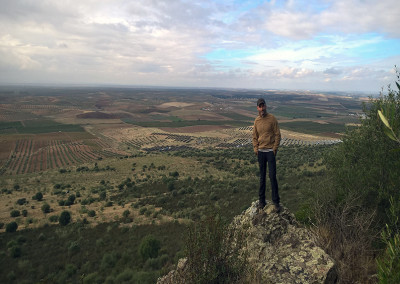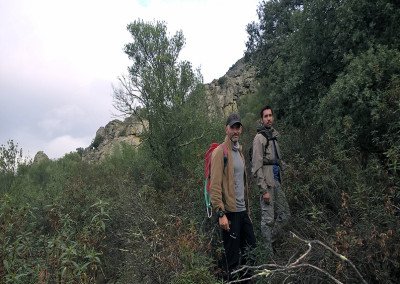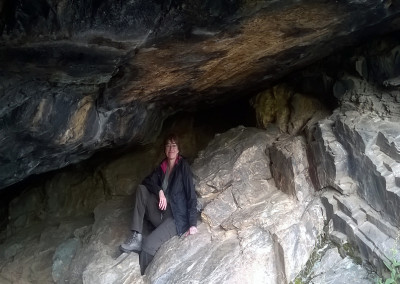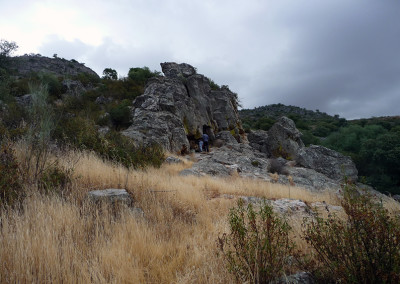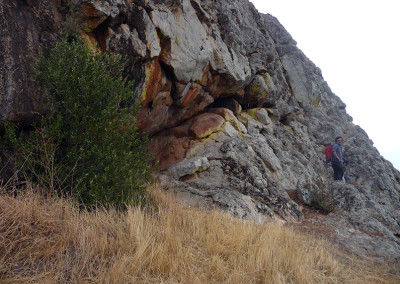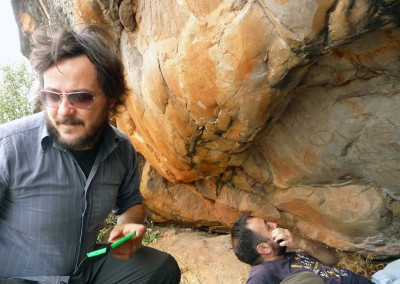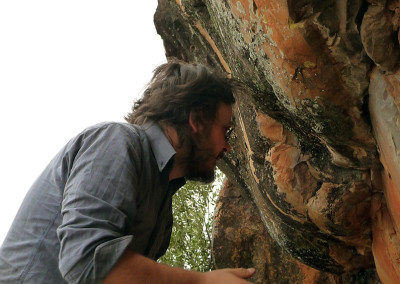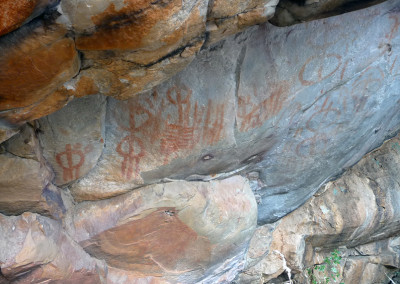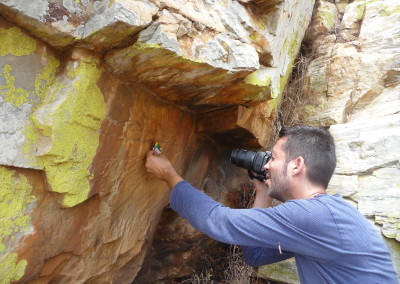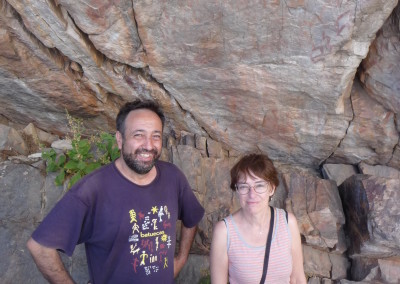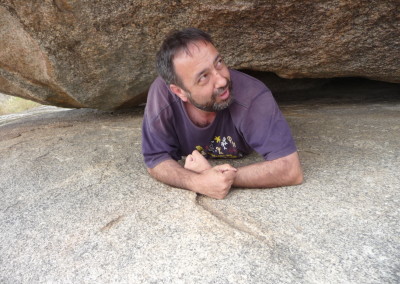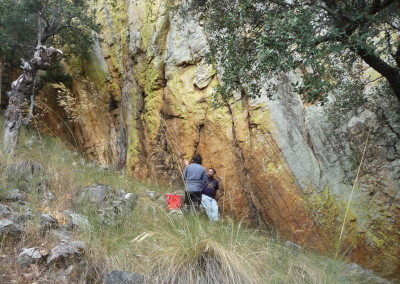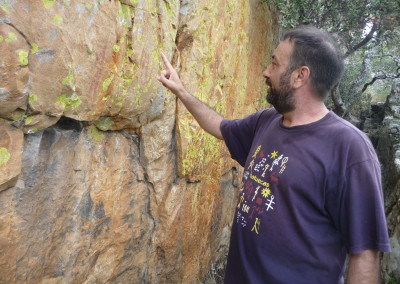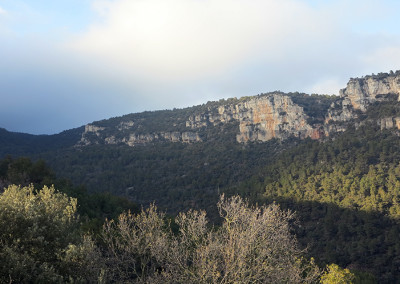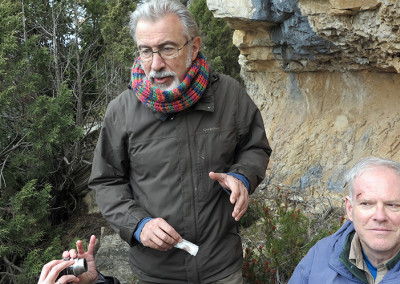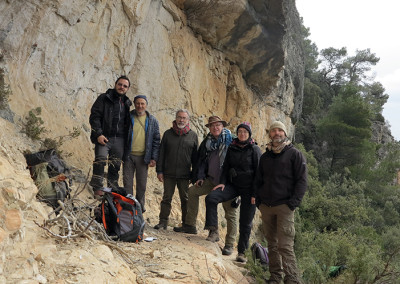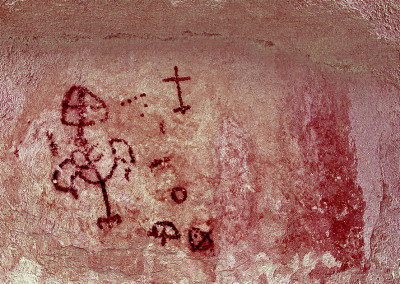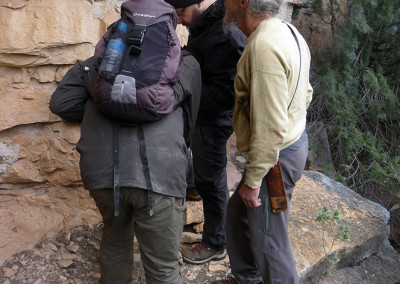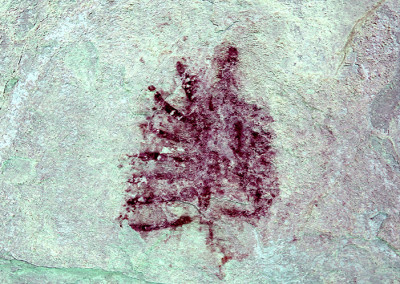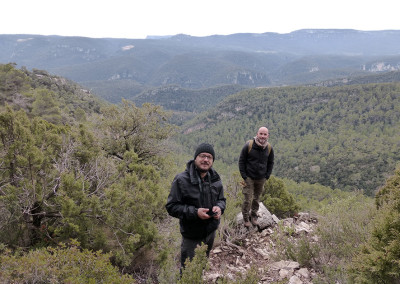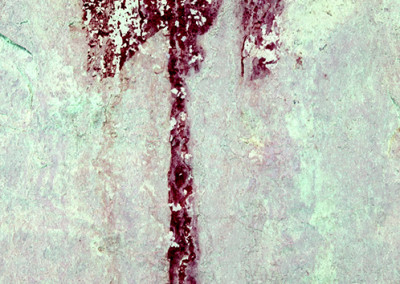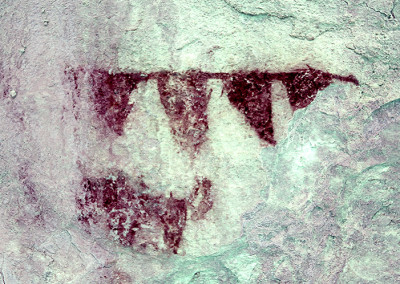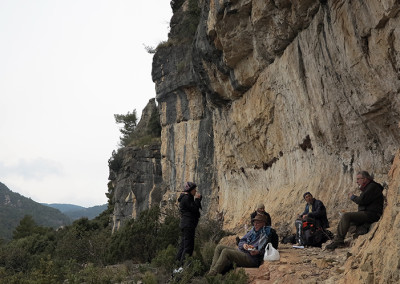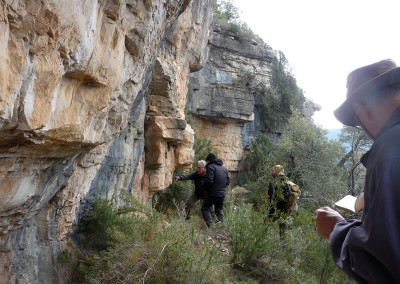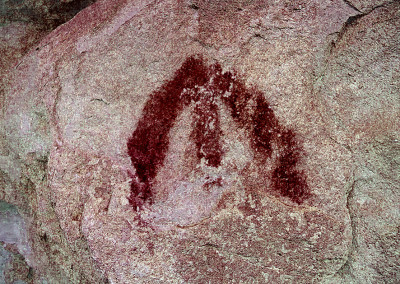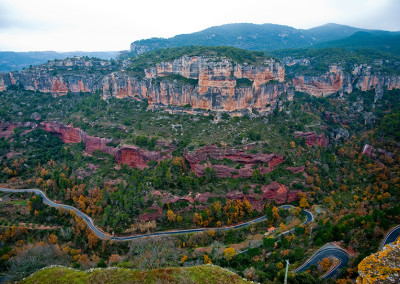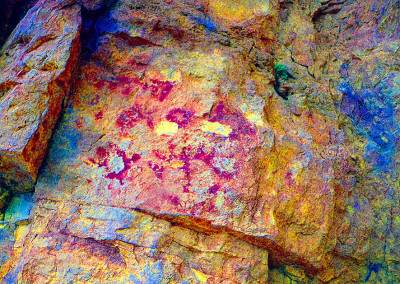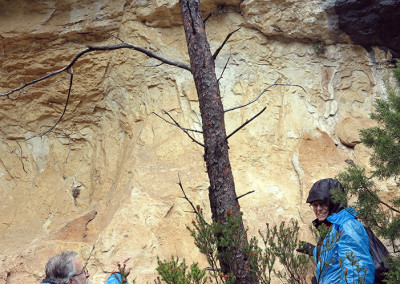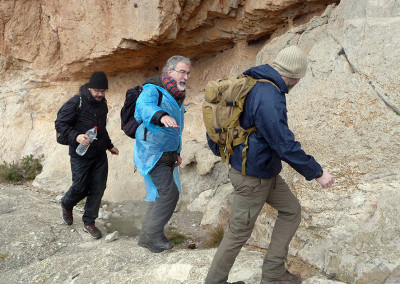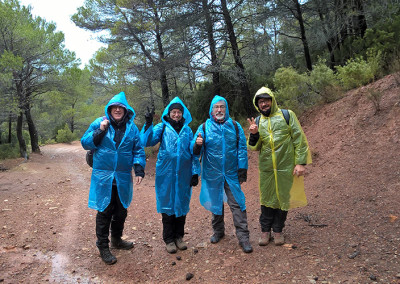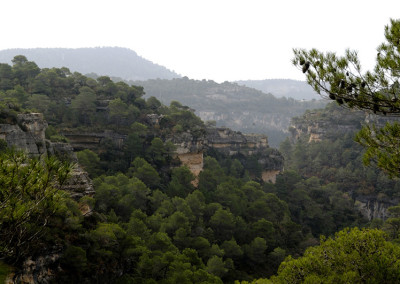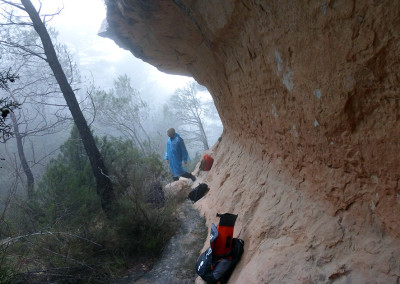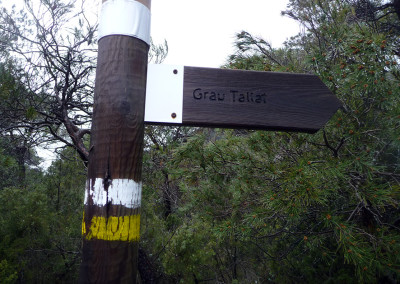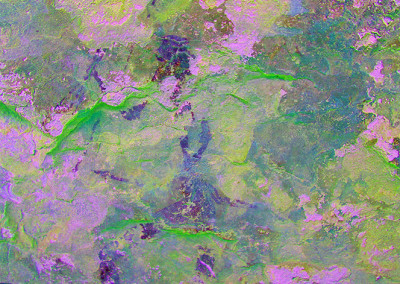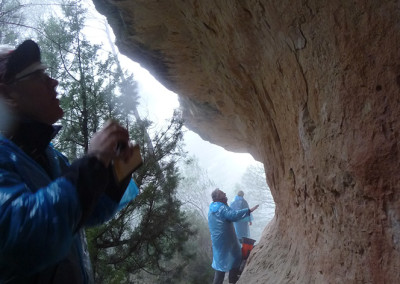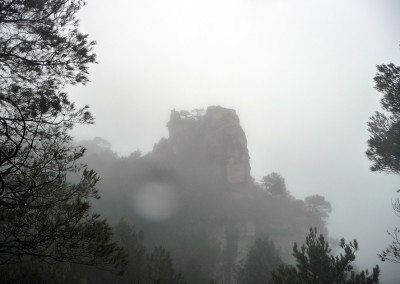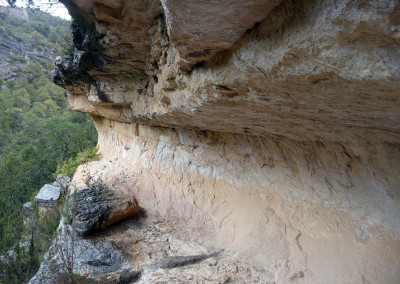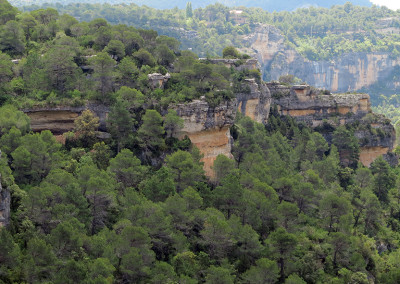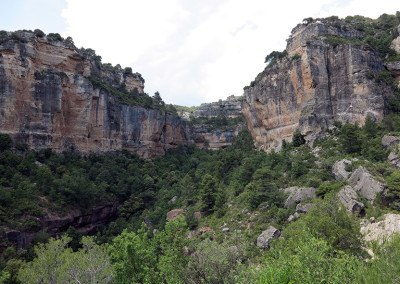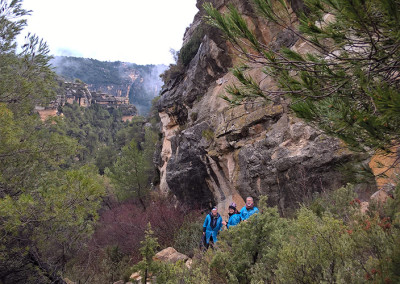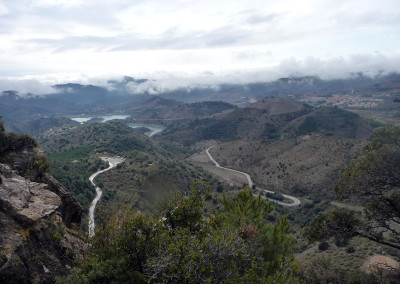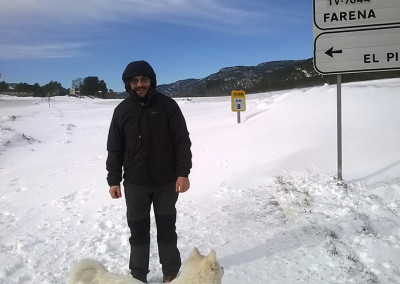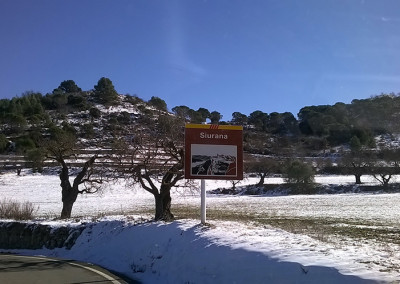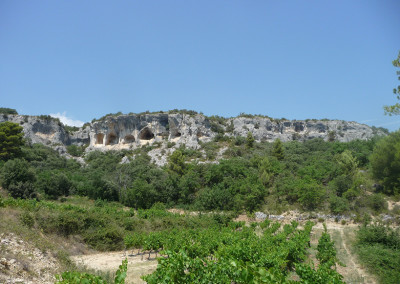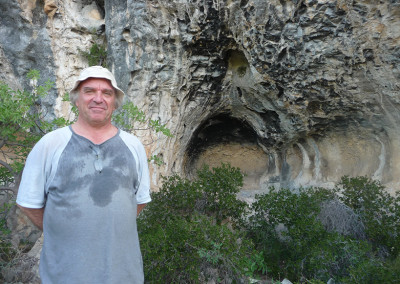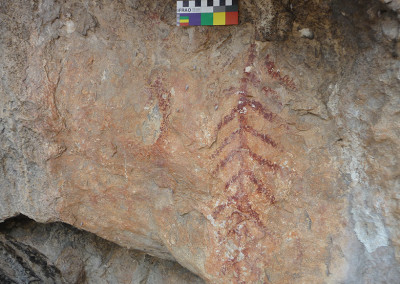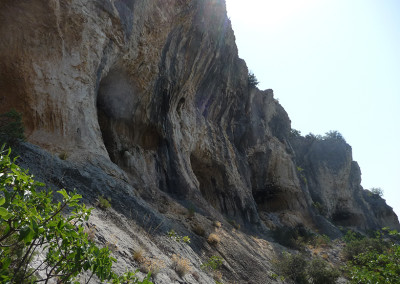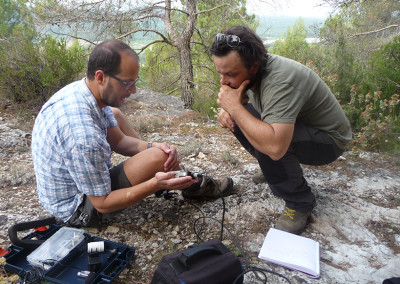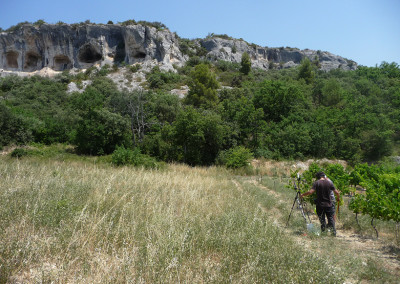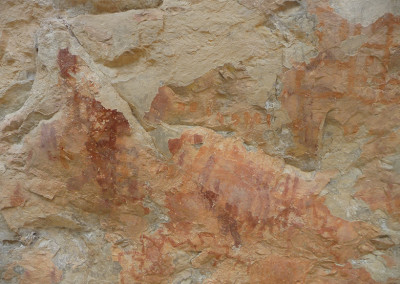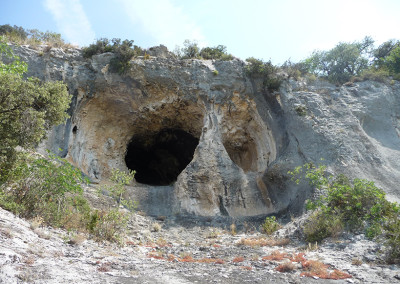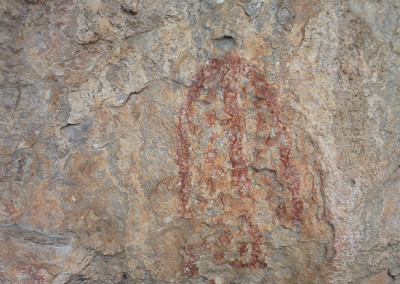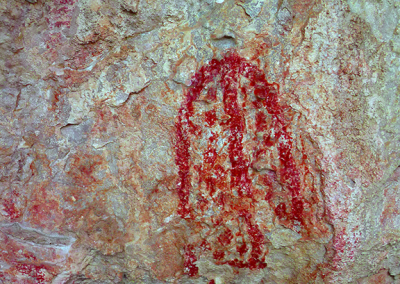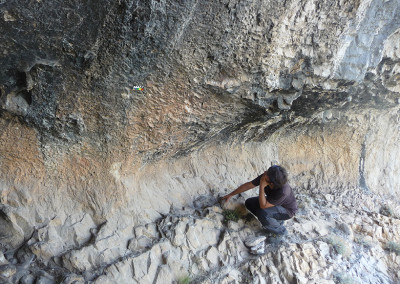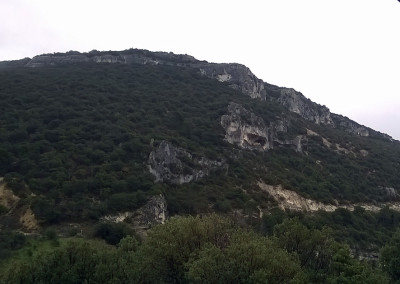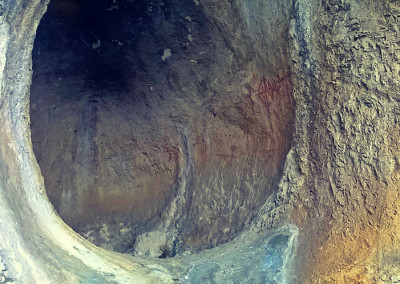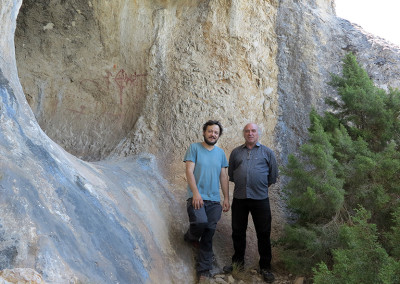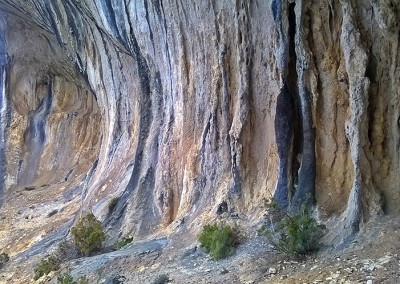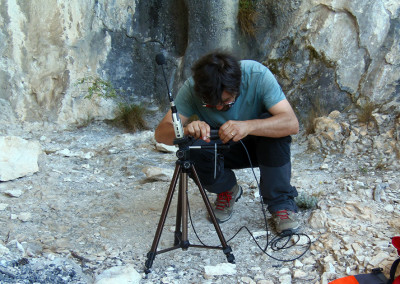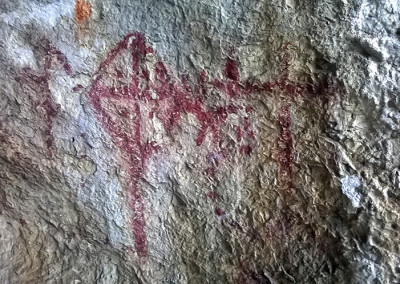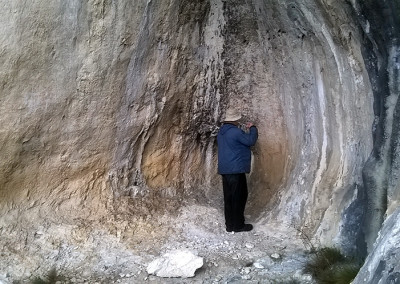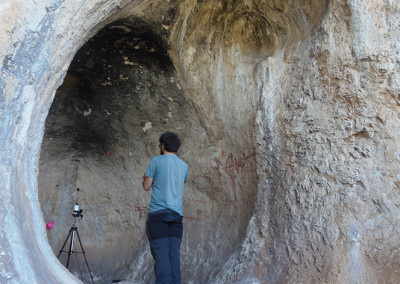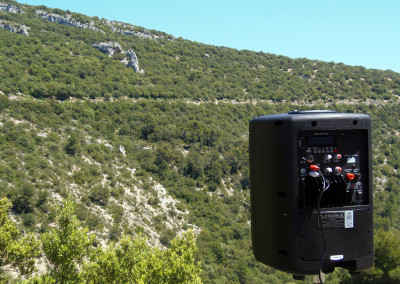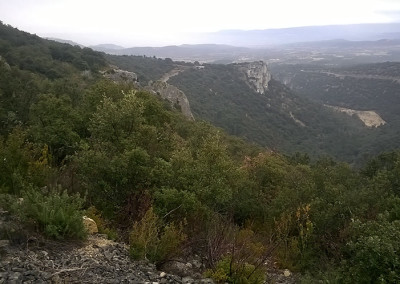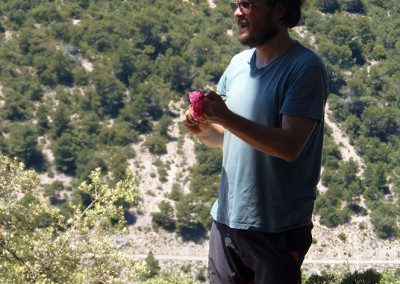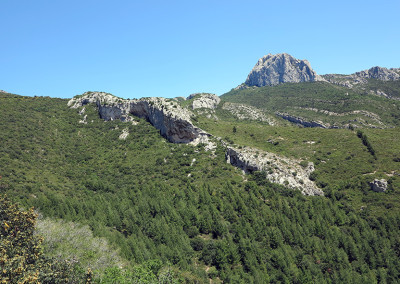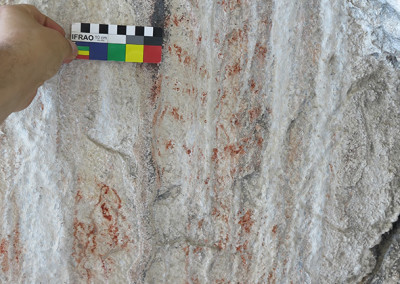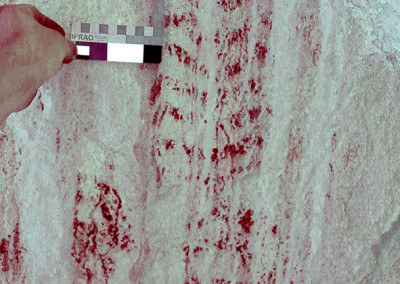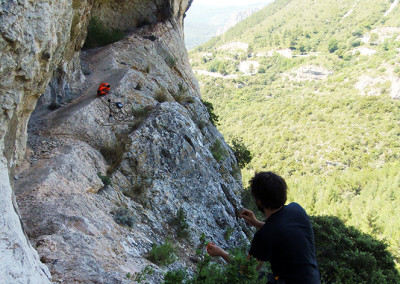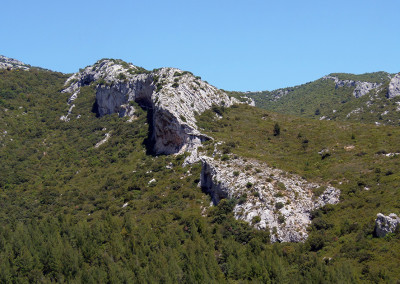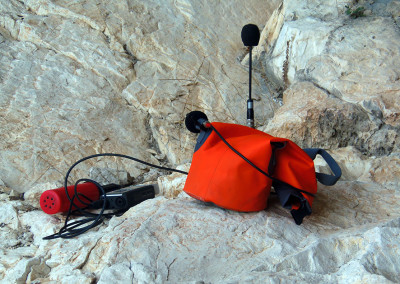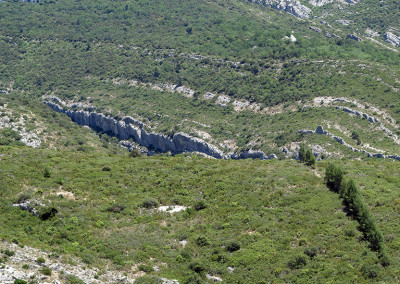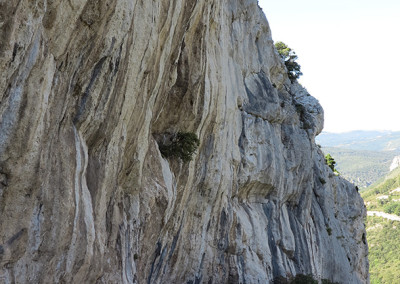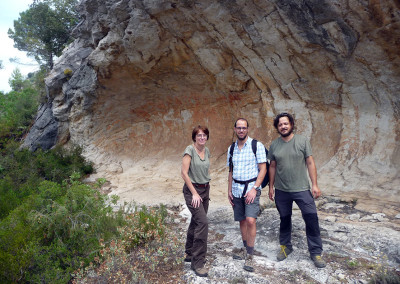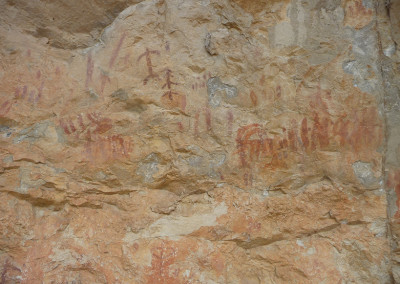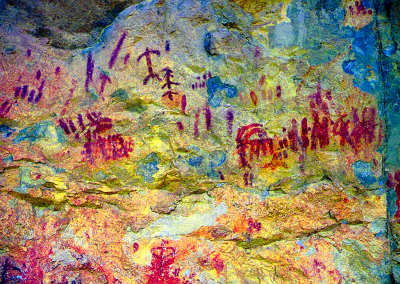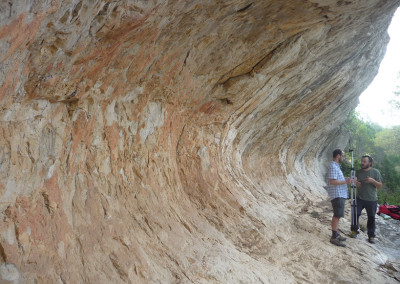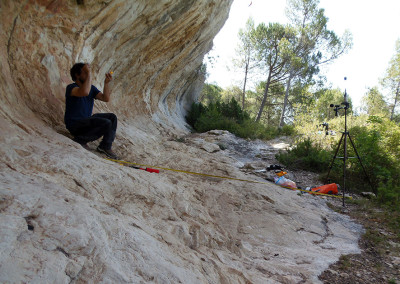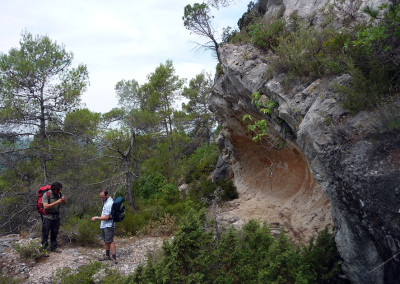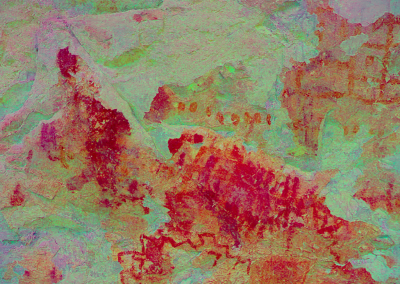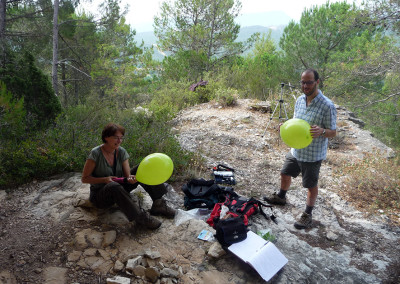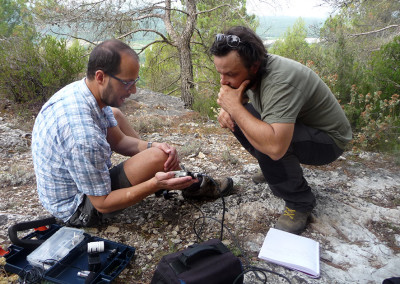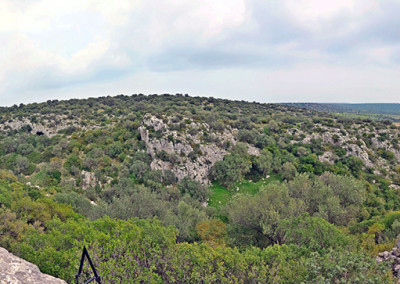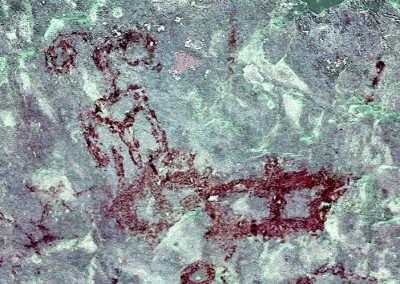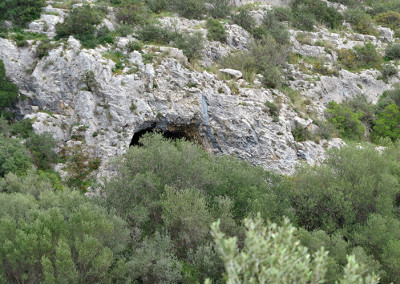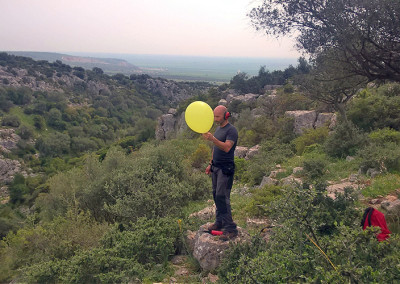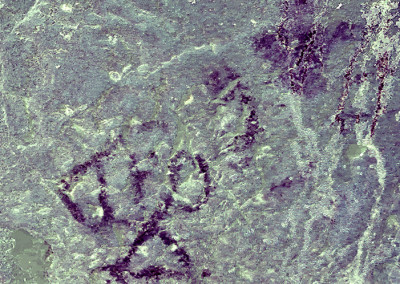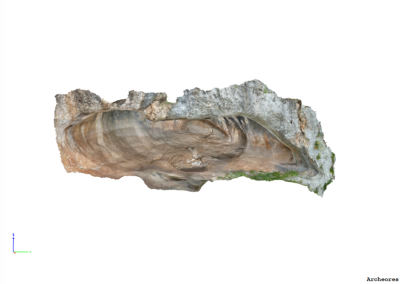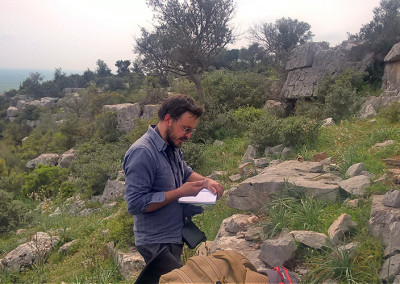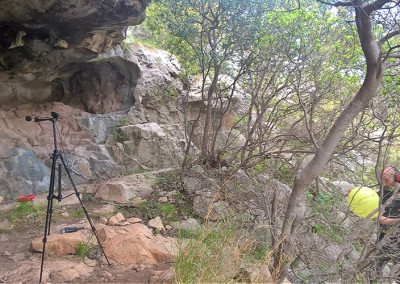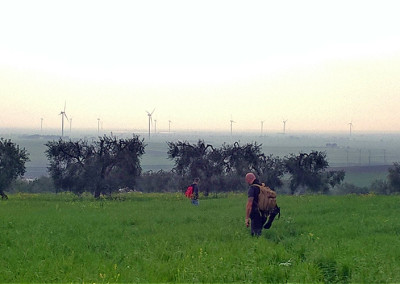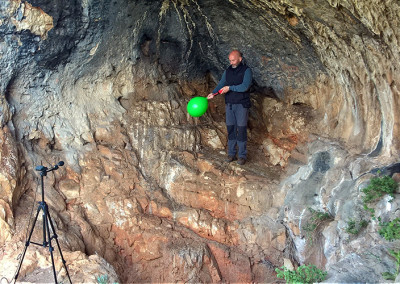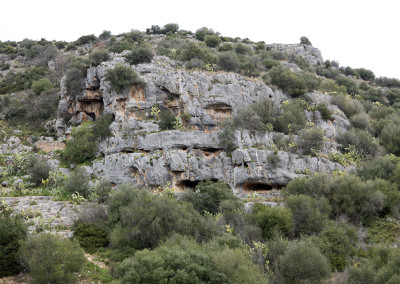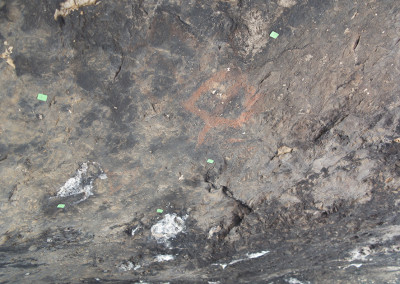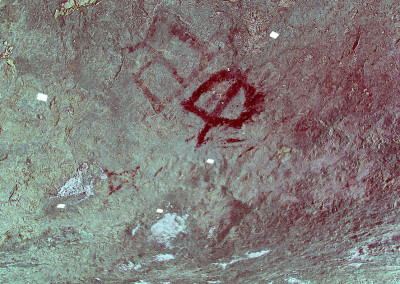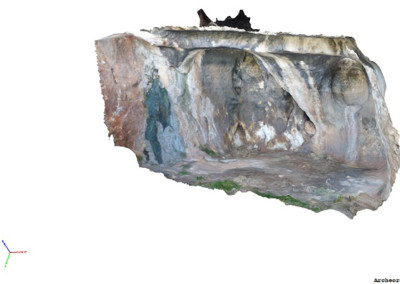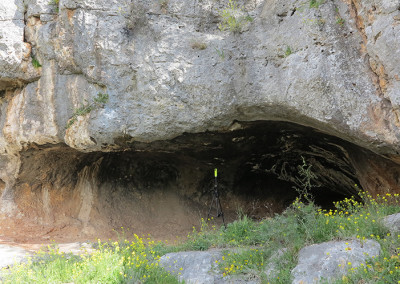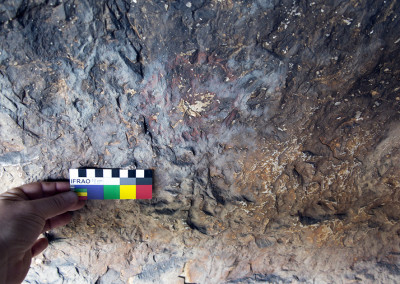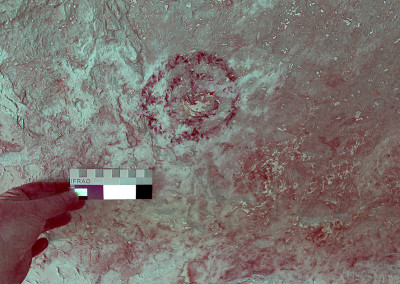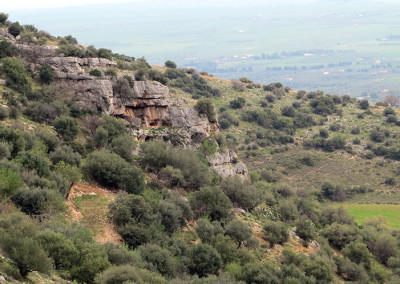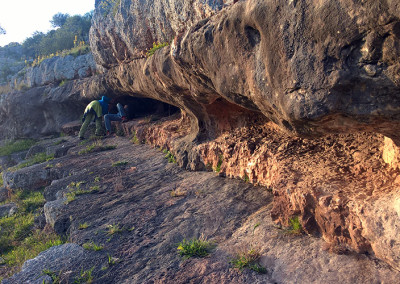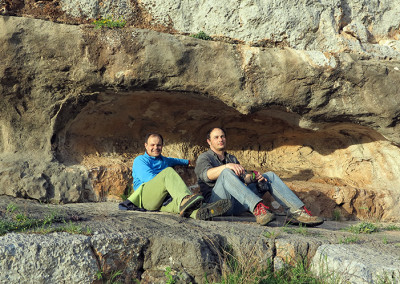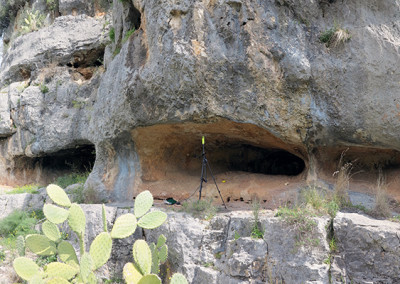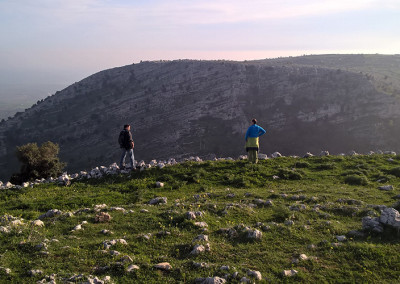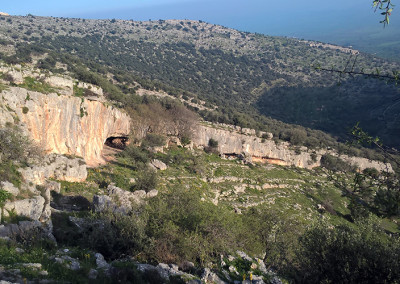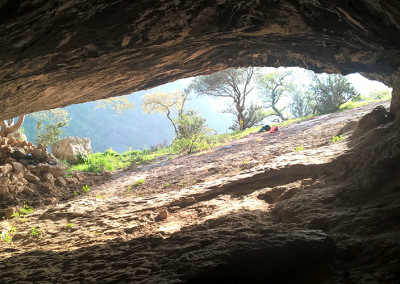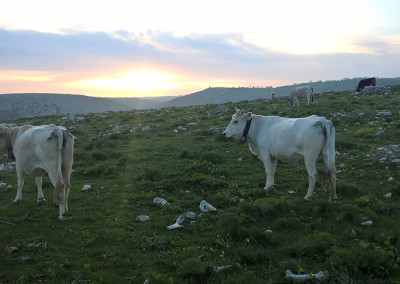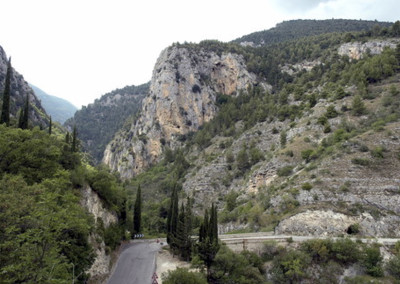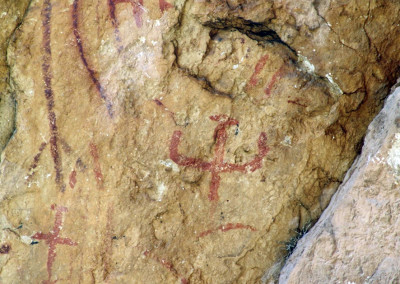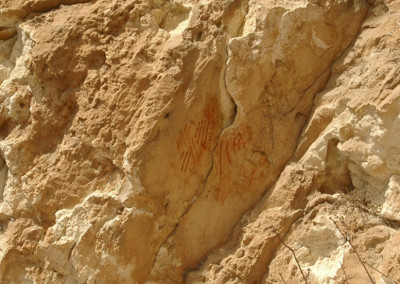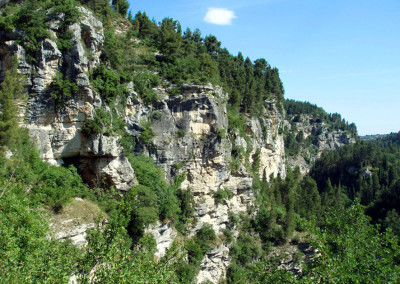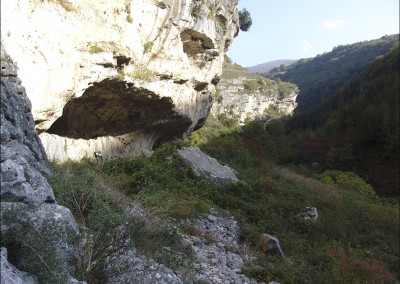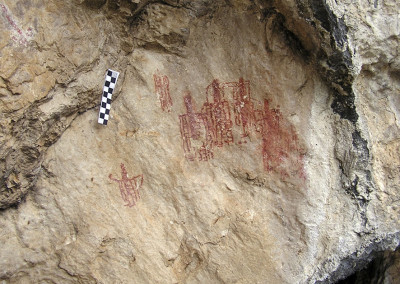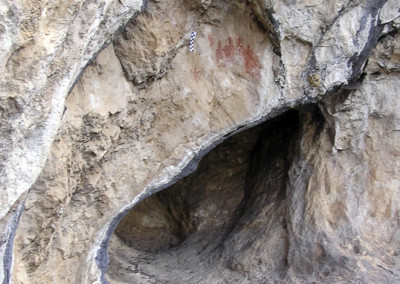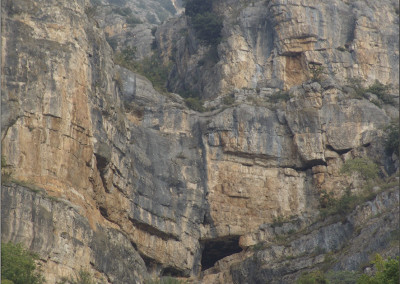Spain
- Arroyo de San Servan (Badajoz)
- Baridana (Tarragona)
- Fonscaldes (Tarragona)
France
- Baume Brune (Vaucluse)
- Baume Peinte (Vaucluse)
- Pin de Simon (Bouches-du-Rhône)
- Abri des Eissartenes (Var)
Italy
- Valle Idivoro (Puglia)
- Valle del Sorbo (Puglia)
- Majella (Abruzzo)
The area, located south of the Guadiana valley in the Extremadura region, is formed by a set of smaller mountain ranges. These are made up mostly of quartzite and have an orientation W-NW to E-SE: Sierra de San Serván (municipality of Arroyo de San Serván), Sierra Grajera (Mérida) and Sierra del Castillo (Alange). This is a very rich area in schematic rock art. In 1916 the rock art of Sierra de San Serván was first documented by Henri Breuil (1933) and, years later, by Manuel León Gil and Ramon García-Verdugo Rubio (1983) and Madgalena Ortiz Macías and Emilio Muñoz-Torrero Caballero (1990). Hipólito Collado Giraldo and José Julio García Arranz, with the assistance of Alejandro González Pizarro, have recently been doing further work in the area. In June and October 2015, the SONART project tested the acoustic properties of shelters along the south-west side of the mountain chain. Involved in this work were Tommaso Mattioli, Margarita Díaz-Andreu, Hipólito Collado Giraldo, José Julio García Arranz, Alejandro González Pizarro and Andrea di Miceli. Special thanks to Víctor Guillén Villares who also helped us in Extremadura in the Berzocana rock art area.
Arroyo de San Servan
Post from RICOH THETA. – Spherical Image – RICOH THETA
Spherical photo of Arroyo de San Servan
The Prades mountains are one of the most remarkable mountain ridge in Catalunya. They are located between the coastal area of Tarragona and the interior highlands of Lleida. The main altitude exceed 1,000 m above sea level and this mountain ridge is marked by an intricate network of canyons and steep mountain scarps. Baridana and Pinró are the names of the upper and lower part of one these canyons in the central part of the mountain massif. This deep, impressive and narrow river valley, excavated by the river Brugent, can be reached by hiking from the village of Rojals and from the small group of houses called Bartra. All but one the eleven rock art sites are located on the east side of the valley and most of them have been included in the World Heritage list by UNESCO in 1998 (Abric I and Abric II de la Baridana, Abrics Britus 1 and Britus 2, Cova de las Creus, Mas d’en Gran and Mas d’en Carles). In March and June 2016, the SONART project team tested the acoustic properties of shelters along the valley. Involved in this work were Tommaso Mattioli, Margarita Díaz-Andreu, Ramon Viñas, Michael Rainsbury, Andrea di Miceli, Pep Lleonart. Special thanks to Daniel and Mercé of Mas de l’Arlequí guest house who also helped us during the fieldwork.
Baridana
From left to right: Tommaso Mattioli, Pep Lleonart, Ramon Viñas, Michael Rainsbury, Margarita Díaz-Andreu and Andrea di Miceli
Mas d’En Carles (Montblanc, Catalunya) – Spherical Image – RICOH THETA
Spherical photo of Mas d’En Carles rock art site
Fonscaldes is the name of a narrow and deep canyon in the western part of Prades mountains. This mountain ridge is one of the most remarkable in Catalunya and it is located between the coastal area of Tarragona and the interior highlands of Lleida. The Fonscaldes canyon is situated nearby the village of Siurana, a small group of houses at the top of an escarpment, very popular among climbers due to the abundance of excellent climbs up to grade 9b. The SONART project team has tested the acoustics of the upper part of the canyon where it has been recently identified by Ramon Viñas a series of shelters with Levantine and Schematic paintings.
Fonscaldes
Tommaso Mattioli (left), Ramon Viñas (center) and Andrea di Miceli (right) in Grau Tallat rock shelter
Group picture of the field work in March 2016. From left to right: Michael Rainsbury, Margarita Díaz-Andreu, Ramon Viñas and Tommaso Mattioli
Grau Tallat – Spherical Image – RICOH THETA
Spherical Photo of Grau Tallat
The Baume Brune cliff is a 800 metres limestone outcrop, almost vertical and orientend W-E in the Vaucluse region in South France. All along the cliff there are, in close sequence, 43 shelters. The first schematic paintings were discovered in the ‘60s by Guy Lombal and the first survey was performed in 1998 by Philippe Hameau, Ada Acovitsioti-Hameau, Cyrille Chopin, Daniel Vaillant and Marie Chantal Vaillant. To date, they have been identified about forty painted figure (both black and red colour) distributed over 8 rock shelters.
Joucas
Mas d’En Carles (Montblanc, Catalunya) – Spherical Image – RICOH THETA
Spherical Photo of Baume Brune rock shelter
The rock art site of Baume Peinte is part of a complex of Neolithic painted shelters and burials discovered in the valley of Combe de Font-Jouval, northwest of the town of Saint-Saturnin-lès-Apt. The site has been discovered in 1995 Hugues Bonnetain and it has been investigated by Philippe Hameau in 1997. The SONART project team has compared the acoustic properties of this site with other painted shelters in the surroundings. The field work has been conducted in June 2016 by Tommaso Mattioli and Philippe Hameau. Special thanks to Ada Acovitsioti-Hameau from the Association A.S.E.R du Centre-Var who also helped us during the fieldwork.
Baume Peinte
Pin de Simon is a cliff located on the south west edge of Sainte Baume mountain ridge. The site is dominated by Pic Bertagne (1042 m). The rock art paintings have been identified by Bernard Grasset in 1989 and mainly studied by Philippe Hameau. They are located in two distinct shelters called Pin de Simon I (upper shelter) and Pin de Simon II Pin (lower shelter). The two rock art sites are separated by about 400 m along which there are many other rock shelters not decorated. In 1993 Iégor Reznikoff, one of the pioneer of archaeoacoustic investigation in rock art research, performed some acoustic experiments in this area arguing that echoes can be heard coming from the painted shelters. In June 2016 the SONART project team carried out acoustic measurements. The field work has been done by Tommaso Mattioli and Philippe Hameau. Special thanks to Ada Acovitsioti-Hameau from the Association A.S.E.R du Centre-Var who also helped us during the fieldwork.
Pin de Simon
Pin de Simon – Spherical Image – RICOH THETA
Spherical Photo of Pin de Simon 1
The rock paintings of Abri des Eissartenes were discovered in 1976 by the inhabitants of Le Val, the small village close to the cliff where the shelter is located. The vertical wall of the rock shelter, of about 23 meters of length, should have been in the past completely covered by paintings. Today, although most of the paintings has disappeared, this site represents the richest concentration of Schematic rock art in France. In July 2015 and June 2016 the SONART project team has carried out acoustic measurements. The field work has been done by Tommaso Mattioli, Margarita Díaz-Andreu, Enrico Armelloni and Philippe Hameau. Special thanks to Ada Acovitsioti-Hameau from the Association A.S.E.R du Centre-Var who also helped us during the fieldwork.
Abri des Eissartenes
Valle d’Ividoro is a 3 km narrow and deep river valley tributary of the Candelaro river in the southern side of the Gargano massif. This valley, due to its easy accessibility from the Tavoliere basin, offered a strategic location for the Neolithic people of the area. The survey of the area, still in progress, has revealed the presence of 3 rock art sites with Schematic figures in red color. Two sites (Grotta del Riposo and Riparo Pazienza) have been discovered in 2004 by Enzo Pazienza of the Centro Studi Grotta Paglicci in Rigano Garganico. The third rock art shelter has been discovered by Tommaso Mattioli during the field work in April 2016. In April 2016, the SONART project team tested the acoustic properties of shelters along the valley. Involved in this work were Tommaso Mattioli, Andrea Di Miceli, Armando Gravina, Enzo Pazienza and Alessio Ciavarella.
valle ividoro
Valle Ividoro (Foggia, Italia) – Spherical Image – RICOH THETA
Spherical Photo of the east side of Valle d’Ividoro
Valle del Sorbo is narrow and deep river valley tributary of the Candelaro river in the southern side of the Gargano massif. The rock art shelters were discovered recently by S. Stea and M. Fabbri and published by Armando Gravina in 2014. New paintings were identified by Tommaso Mattioli during the acoustic measurements in April 2016. The survey of the area, still in progress, could lead to the discovery of new Schematic motifs. In April 2016, the SONART project team tested the acoustic properties of shelters along the valley. Involved in this work were Tommaso Mattioli, Andrea Di Miceli, Armando Gravina, Enzo Pazienza and Severino Stea.
Valle del Sorbo
Severino Stea and Enzo Pazienza searching for rock art paintings during the field works in April 2016
Severino Stea and Enzo Pazienza searching for rock art paintings during the field works in April 2016
Valle del Sorbo – Spherical Image – RICOH THETA
Spherical Photo of Valle del Sorbo
Majella and Morrone are two mountain ridges of the Apennine in Abruzzo. After the first discovery of Riparo di Pacentro rock art motifs in the ’60s, new rock art sites have been identified and studied by Tommaso Mattioli. In May 2016, the SONART project team tested the acoustic properties of shelters in this area. Involved in this work were Tommaso Mattioli and Andrea Di Miceli.


